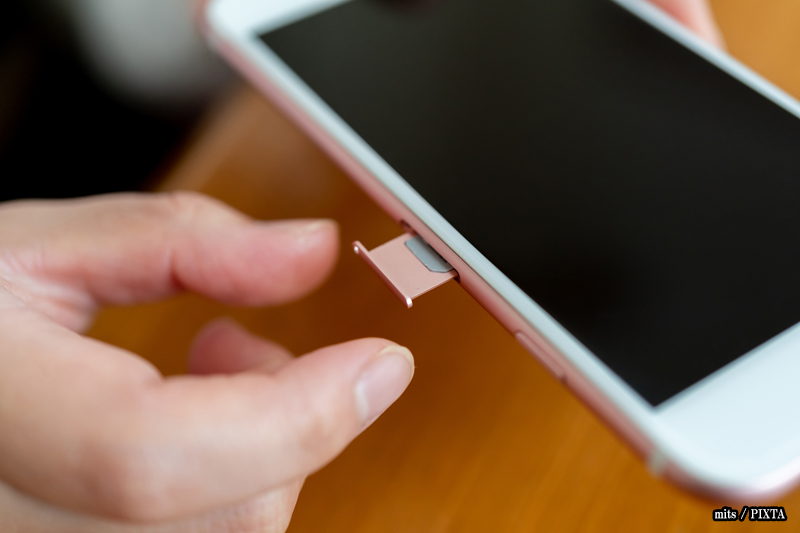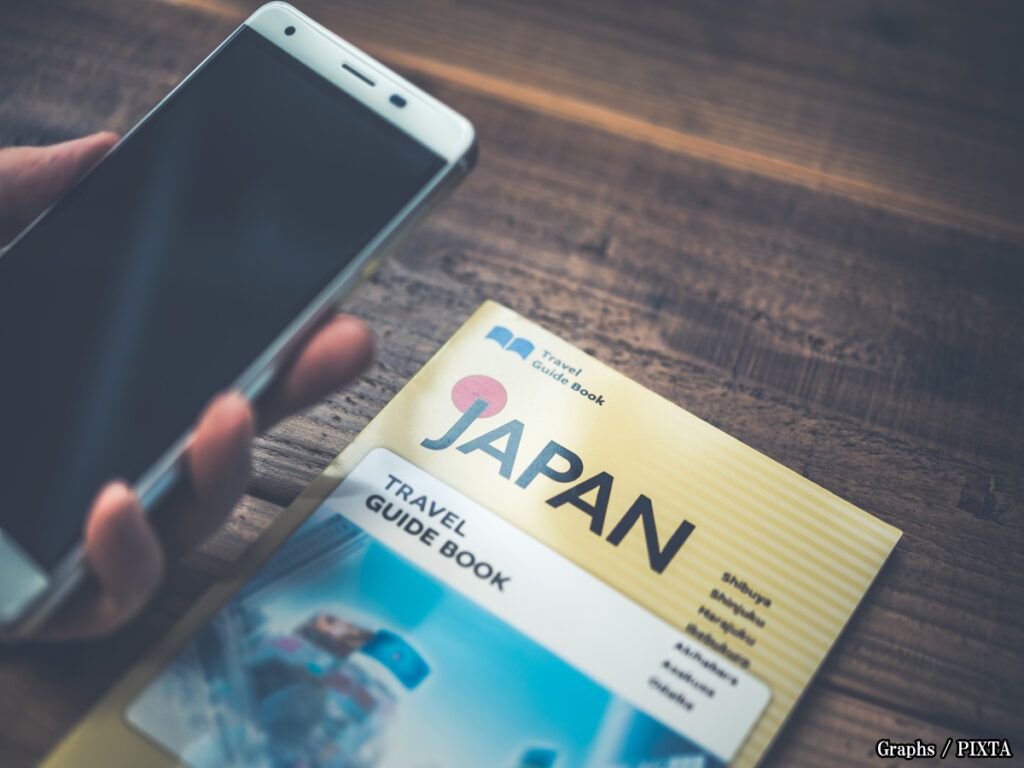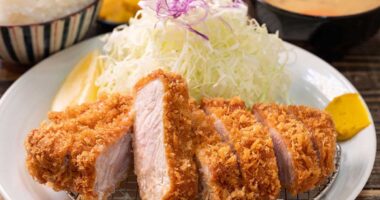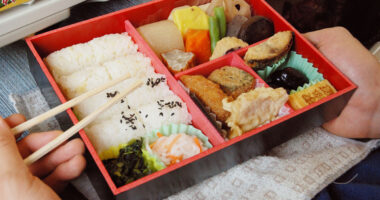- Pocket Wi-Fi vs. SIM card: an overview
- Network coverage and speed in Japan (4G vs. 5G)
- Pocket Wi-Fi: advantages and disadvantages for travelers in Japan
- SIM cards: advantages and disadvantages for travelers in Japan
- Choosing between Pocket Wi-Fi and a SIM card: the best option for different travelers
- Cost comparison: Pocket Wi-Fi vs. SIM card
- Final verdict: Pocket Wi-Fi or SIM card?
Staying connected in Japan is a top priority for frequent travelers, whether you’re navigating Tokyo’s streets or remote mountain villages. The big question is: do you rent a Japan Wireless pocket Wi-Fi or get a local SIM card for your phone? This comprehensive comparison will delve into Japan Wireless coverage and speed, 5G vs. 4G performance, and how Japan’s major carriers stack up.
We’ll also explore the advantages and disadvantages of each option, provide practical tips for different travel situations, and explain exactly how to pick up and return pocket Wi-Fi devices. Plus, learn how to save money with coupon codes and discounts. By the end, you’ll know which solution – pocket Wi-Fi or SIM – is the best connectivity option for your Japan adventures.
Pocket Wi-Fi vs. SIM card: an overview
Before jumping into coverage and speed details, let’s clarify what these options are:
“Pocket Wi-Fi” (portable Wi-Fi hotspot)
A small wireless router that connects to Japanese cellular networks (like SoftBank, Docomo, or KDDI) and broadcasts a private Wi-Fi signal. It has its own SIM inside and can convert 4G or 5G signals into Wi-Fi for your device. Providers such as Japan Wireless, Ninja WiFi, and Sakura Mobile rent these units to travelers. Essentially, it’s like carrying a tiny Wi-Fi router in your pocket.
Travel SIM card
A local Japanese SIM card (or eSIM) that you insert into your smartphone or tablet. It gives your device direct access to a carrier’s 4G/5G network. Many travel SIMs are data-only, providing mobile internet but no voice number (though you can still use VoIP apps for calls). Your phone must be unlocked to use a Japanese SIM. SIMs for visitors often come with preset data allowances or even unlimited plans for a set duration.
Both options let you use maps, messaging apps, emails, and social media on the go. The core difference is how you connect (via a separate Wi-Fi device vs. directly in your phone). Now, let’s compare their network performance and what that means for travelers.
Network coverage and speed in Japan (4G vs. 5G)
Japan offers one of the most advanced mobile networks, with NTT Docomo, SoftBank, and au (KDDI) providing extensive coverage and high speeds.
Coverage
- NTT Docomo has the widest coverage, especially in rural and mountainous areas.
- SoftBank and au/KDDI also cover nearly all populated regions, ensuring strong signals in cities, train stations, hotels, and tourist spots.
- Extremely remote areas (deep mountains, isolated islands) may have limited service.
To check coverage before your trip, you can visit the official network maps at each provider’s website:
4G vs. 5G Speeds
Japan adopted 5G early, and major cities now have strong 5G coverage. Many pocket Wi-Fi providers offer 4G and 5G plans, with 5G speeds exceeding 500 Mbps in ideal conditions. However, 4G (sometimes referred to as 4G LTE or simply LTE, depending on the provider) offers speeds of 20–100+ Mbps, which are sufficient for most activities, including streaming and video calls.
- 5G benefits:
Lower latency and higher speeds, ideal for crowded areas. - 4G reliability:
Strong and stable across Japan, even in rural areas.
Most pocket Wi-Fi devices still use 4G, but newer models and 5G-compatible phones with a 5G SIM can connect to the faster network.
Major carrier comparison
This is how the major Japanese carriers compare, according to the “OpenSignal April 2024 Japan Mobile Network Experience Report”:
- SoftBank leads in video streaming and download speeds.
- NTT Docomo has the best availability, with 99.7% signal presence.
- Au/KDDI competes closely and excels in some 5G performance tests.
Pocket Wi-Fi providers in Japan
One example of a provider is Japan Wireless, known for offering truly unlimited data with no slowdowns. Unlike many providers that throttle speeds after reaching a data cap, Japan Wireless ensures consistent high-speed connectivity, making it ideal for streaming, video calls, and large file uploads.
Other providers include Ninja WiFi and Sakura Mobile, which also offer competitive plans tailored to travelers’ needs.
Japan Wireless service locations
- Pick-up at airports:
Available at Narita, Haneda, Kansai, and other major airports. - Pick-up at hotels:
Option to receive devices directly at your accommodation.
A Japan Wireless pocket Wi-Fi or SIM provides nationwide coverage and high-speed internet. While 5G enhances city speeds, 4G remains excellent across Japan. All major carriers are reliable, ensuring seamless connectivity for travelers.
For reservations or customer support, visit the provider websites or find their airport counters upon arrival.
Japan Wireless official website

Photo for illustrative purposes
Pocket Wi-Fi: advantages and disadvantages for travelers in Japan
Staying connected is essential when visiting Japan. Many travelers choose pocket Wi-Fi as their go-to internet solution, especially when traveling in groups or using multiple devices.
Advantages of Pocket Wi-Fi
Connect multiple devices
One of the biggest advantages of pocket Wi-Fi is the ability to connect several devices simultaneously. Whether you’re using a SIM card on your phone or need internet for a tablet, laptop, or multiple travelers, a single unit covers them all. This makes it cost-effective and convenient for groups, eliminating the need to buy multiple SIM cards.
Easy setup – No tech skills required
Unlike a SIM card, which may require phone unlocking or manual APN settings, pocket Wi-Fi works out of the box. Just turn it on, enter the password, and you’re connected—exactly like home Wi-Fi. Pocket Wi-Fi units from providers like Japan Wireless, Ninja WiFi, and Sakura Mobile come pre-configured with a SIM, eliminating the need to swap SIMs or adjust settings
Unlimited data with no throttling
Many SIM card plans limit data or slow speeds after a certain usage threshold. In contrast, Japan’s pocket WiFi’s coverage and speed remain consistent with truly unlimited data. You can stream, video call, and upload content freely without worrying about restrictions.
Long battery life + free power bank
A key benefit of pocket Wi-Fi over SIM tethering is battery life. Pocket Wi-Fi devices last many hours on average per charge, with many providers offering models that last between 10–20 hours. For example, Japanese Wireless devices last 18–20 hours, while other providers like Ninja WiFi and Sakura Mobile offer similar battery performance. Additionally, most rentals include a free power bank, ensuring uninterrupted connectivity throughout the day.
No need to unlock your phone
If your smartphone is carrier-locked, a SIM card may not work. With Pocket Wi-Fi, your phone stays in airplane mode while you use Wi-Fi for data. This is also useful if you need to keep your home SIM card for calls and texts while abroad.
Disadvantages of Pocket Wi-Fi
Extra device to carry
While pocket Wi-Fi is compact, it’s still an additional gadget to keep track of.
Must pick up and return
Unlike a SIM card, which you can dispose of after use, pocket Wi-Fi rentals require returning the device. Luckily, many Pocket Wi-Fi providers offer easy options:
- Airport pickup & return (Narita, Haneda, Kansai, etc.)
- Hotel delivery
- Mail returns with a prepaid envelope
Loss or damage fees
Losing or damaging a pocket Wi-Fi unit may result in fees, which typically range from 10,000 JPY to 25,000 JPY (tax included), depending on the provider and device model. Many providers offer optional insurance to cover accidental damage or loss, which can help reduce or waive these fees. Travelers should review their rental terms carefully and consider insurance to avoid unexpected costs.
Requires daily charging
Even with long battery life, pocket Wi-Fi requires daily charging, especially if multiple devices are connected. You can bring your power bank to help, but it’s another item to keep charged.
Is Pocket Wi-Fi right for you?
For travelers who need unlimited high-speed data, multiple device connections, and hassle-free setup, Pocket Wi-Fi is a great choice. While there are a few drawbacks, Pocket Wi-Fi remains a top pick for groups and heavy data users visiting Japan.
SIM cards: advantages and disadvantages for travelers in Japan
For many travelers, a SIM card or eSIM is a simple and cost-effective way to stay connected in Japan. Unlike pocket Wi-Fi, a SIM integrates directly into your phone, offering seamless connectivity without extra hardware. Travelers can choose from a range of SIM options, including unlimited data and 5G coverage, ensuring reliable internet throughout your trip.

Photo for illustrative purposes
Advantages of SIM card
No extra device to carry
A SIM card connects your phone directly to a local network, meaning no extra gadget to carry or charge. This makes it a great option for minimalist travelers who prefer to use their phones as they normally would. With an eSIM, activation is even faster—just scan a QR code, and you’re online.
Instant internet access upon arrival
Many Japanese airports have vending machines and service counters selling travel SIMs, allowing you to swap the card and connect within minutes. Additionally, many mobile Wi-Fi rental services require in-person pickup, but some providers offer international shipping for added convenience. eSIMs are even more convenient, as they can be activated before departure, ensuring seamless connectivity the moment you land.
No return required
Unlike pocket Wi-Fi, which needs to be returned, a SIM card is disposable. Once your trip is over, you can keep or discard it—no need to drop off equipment at the airport or mail it back. There’s also no penalty if you lose it, as prepaid SIMs are yours to keep.
Budget-friendly for short trips
A SIM card is often more affordable than Pocket Wi-Fi for solo travelers, providing unlimited data at very reasonable prices.
Providers such as Japan Wireless, Sakura Mobile, and Mobal offer various data plans, including 3 GB or 5 GB packages for under 3,000 JPY (tax included), which can be ideal for short visits. Prices and packages vary by provider, so travelers should compare options based on their data needs.
Seamless use of your phone’s features
A SIM card allows your phone to function like a local device, enabling seamless use of GPS, messaging apps, and ride-hailing services without relying on a separate Wi-Fi connection. However, pocket Wi-Fi can also support these functions as long as a stable internet connection is available. While most tourist SIMs are data-only (no voice calls or SMS), some options support phone numbers for extended stays.
Disadvantages of SIM cards
Single-device limitation
A SIM card provides internet to one device—your phone or tablet. Unlike pocket Wi-Fi, it cannot share data across multiple gadgets unless you enable tethering. However, this can drain your phone’s battery quickly, and some travel SIMs prohibit hotspot use. If you’re traveling with a group or multiple devices, pocket Wi-Fi may be a better option.
Phone must be unlocked and compatible
To use a Japanese SIM card, your phone must be carrier-unlocked. If it’s locked to your home provider, the SIM won’t work. Additionally, not all phones support Japanese network bands, so checking compatibility before purchasing is essential. We recommend confirming compatibility beforehand, as refunds are not available for incompatible devices.
Setup and configuration required
Installing a SIM card is simple but requires some manual setup. You must eject your current SIM, insert the new one, and configure the APN settings to enable data. While instructions are provided, less tech-savvy users might find it slightly confusing. Pocket Wi-Fi, in contrast, is completely pre-configured.
Potential data limits
Unlike pocket Wi-Fi, which often includes truly unlimited data, some SIM cards have fixed data caps (e.g. 3 GB, 5 GB, or 10 GB) or apply fair-use throttling after reaching a threshold. Some providers may offer slow speeds after a certain usage level, so it’s important to check with your provider beforehand. While some offer truly unlimited 5G SIMs with no throttling, others may impose speed restrictions after reaching a specific data threshold.
Is a SIM card right for you?
A SIM card is a great choice for solo travelers seeking a lightweight, cost-effective, and hassle-free internet solution. With instant activation, no extra device to carry, and no return needed, it offers maximum convenience. Just be sure to check compatibility, choose a plan with enough data, and ensure your phone is unlocked before traveling.
Choosing between Pocket Wi-Fi and a SIM card: the best option for different travelers
When traveling in Japan, staying connected is essential. Whether you choose pocket Wi-Fi or a SIM card, the right option depends on your travel style, data needs, and budget.
Let’s break down different travel situations to help you make the best choice.
Solo traveler on a short trip
If you’re visiting Japan alone for a week or less, a prepaid SIM card or eSIM is often the most convenient and budget-friendly choice.
- No extra device to carry.
- Instant connectivity upon arrival.
- Lower cost than pocket Wi-Fi for one person.
A 7-day unlimited data SIM card, for example, is a great option for checking maps, booking rides, and staying connected. Providers such as Japan Wireless, Sakura Mobile, and Mobal offer various plans, with coverage and speeds depending on the network they use.
Group of friends or family vacation
For a family or group of friends, renting a Pocket Wi-Fi is the best choice.
Why choose Pocket Wi-Fi?
- Connects multiple devices (phones, laptops, tablets).
- More cost-effective than buying separate SIM cards for each person.
- Ensures everyone stays connected without worrying about data limits.
Pocket Wi-Fi rentals in Japan typically cost more than individual SIMs but when shared among three to five travelers, they can be more cost-effective.
Frequent business traveler or long-term visitor
If you visit Japan frequently or are staying for an extended period, choosing between Pocket Wi-Fi and a SIM card depends on your needs.
For short, repeated visits:
- A rechargeable eSIM is ideal for minimal hassle.
- Some providers offer year-long SIM cards that can be topped up each visit.
For long-term stays:
- Many providers offers 3, 6, and 12-month pocket Wi-Fi rentals, eliminating the need for frequent pickups and returns.
- A long-term pocket Wi-Fi ensures stable, unlimited data for remote work or heavy usage.
Cost comparison: Pocket Wi-Fi vs. SIM card
Pocket Wi-Fi rental costs
- Many providers offer unlimited 4G pocket Wi-Fi rentals, with average costs ranging from 7,000 JPY to 8,500 JPY (tax included) per week (about 1,000 JPY to 1,200 JPY per day).
- For long-term rentals (28+ days), rates typically start at 500 to 700 JPY (tax included) per day, or around 15,000 JPY to 20,000 JPY (tax included) per month, depending on the provider and plan.
Best for groups and heavy data users who want truly unlimited speeds.
SIM card costs
- Short-term plans:
A seven-day unlimited SIM card typically costs between 2,500 JPY and 3,500 JPY (tax included), depending on the provider. - Long-term plans:
A 30-day unlimited SIM card usually ranges from 8,500 JPY to 10,500 JPY, with some providers offering discounts for extended stays.
Best for solo travelers on short trips or those needing a budget-friendly option.

Photo for illustrative purposes
Final verdict: Pocket Wi-Fi or SIM card?
| Travel Type | Best Option |
|---|---|
| Solo, short trip | SIM card / eSIM |
| Group / Family | Pocket Wi-Fi |
| Frequent traveler | Rechargeable eSIM / Long-term Pocket Wi-Fi |
| Remote area explorer | SIM card providers |
| Heavy data user | Pocket Wi-Fi (unlimited data) |
Both Japan Wireless Pocket Wi-Fi and SIM cards offer excellent coverage and speed on top-tier networks. If you need unlimited data and multi-device sharing, go for Pocket Wi-Fi. If you prefer simplicity and lower cost, a SIM card is the way to go.
At Umami bites, we strive to provide the best travel insights to help you make the most of your Japan adventure. No matter which service you choose, having reliable connectivity will ensure a smoother and more enjoyable trip. For more Japan travel tips, stay tuned to Umami bites.















